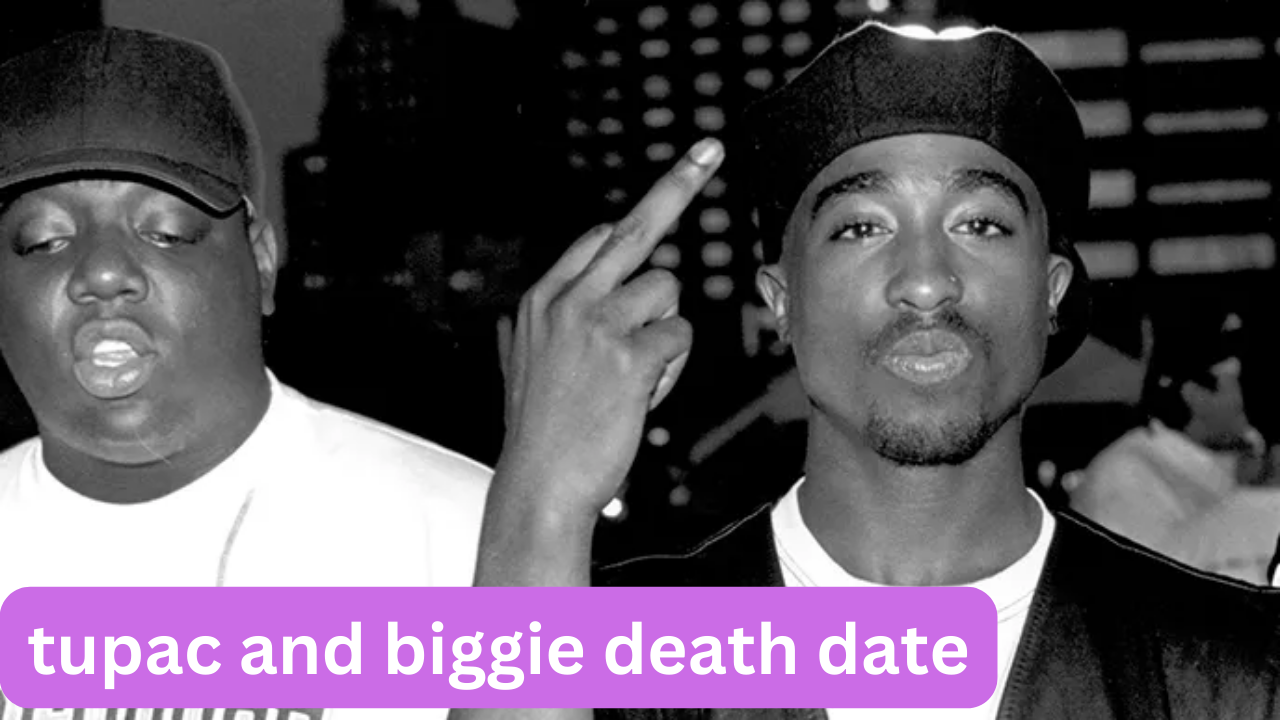The world of hip-hop has been forever shaped by the indelible impact of two of its most iconic figures: Tupac Shakur and Christopher Wallace, known as Biggie Smalls or The Notorious B.I.G. Their lyrical prowess, charismatic personas, and profound influence on music and culture are unparalleled. Yet, their legacies are intertwined with tragedy, as both artists met untimely deaths in the 1990s. This article delves into the circumstances surrounding their deaths, the ongoing mysteries, and their enduring influence on hip-hop culture.
Tupac Shakur: The Life and Death of a Hip-Hop Legend
Tupac’s Early Life and Rise to Fame
Tupac Amaru Shakur was born on June 16, 1971, in East Harlem, New York City. Known for his poetic lyrics and passionate delivery, Tupac’s music often explored themes of social injustice, poverty, and the struggles of African American communities. His career skyrocketed with hits like “California Love,” “Dear Mama,” and “Changes,” making him a household name by the mid-1990s.
The Events Leading to Tupac’s Death
On September 7, 1996, Tupac Shakur was shot multiple times in a drive-by shooting in Las Vegas, Nevada. He succumbed to his injuries six days later, on September 13, 1996, at the age of 25. The circumstances surrounding his murder remain shrouded in mystery, with numerous theories and speculations about the motives and perpetrators. The case has been subject to various investigations, yet no arrests have been made, leaving a lingering sense of unresolved justice.
The Impact of Tupac’s Death on the Music Industry
Tupac’s death sent shockwaves through the music industry and his fans worldwide. His passing not only marked the loss of a prolific artist but also highlighted the intense rivalries and violence that plagued the hip-hop community at the time. Despite his untimely demise, Tupac’s influence persists, with posthumous releases and the continuous relevance of his music in addressing social issues.
The Notorious B.I.G.: A Brief Overview of His Career and Death
Biggie’s Early Life and Musical Journey
Christopher Wallace, known as The Notorious B.I.G. or Biggie Smalls, was born on May 21, 1972, in Brooklyn, New York. Biggie’s smooth flow, clever wordplay, and storytelling ability set him apart as one of the greatest rappers of all time. His debut album, “Ready to Die,” and subsequent work solidified his status in hip-hop history.
The Fateful Night: Biggie’s Death
On March 9, 1997, just six months after Tupac’s death, Biggie was fatally shot in a drive-by shooting in Los Angeles, California, after attending a party. He was 24 years old. Similar to Tupac’s case, Biggie’s murder remains unsolved, with various theories suggesting gang-related motives, disputes within the music industry, or a connection to Tupac’s murder. The lack of resolution in both cases has led to widespread speculation and conspiracy theories.
Legacy and Posthumous Influence
Biggie’s death was a monumental loss to the music world, further intensifying the East Coast-West Coast rivalry narrative that many believed contributed to the violence. His posthumous album, “Life After Death,” released just weeks after his murder, became a critical and commercial success, cementing his legacy as one of the most influential rappers in history.
Exploring the Theories and Unsolved Mysteries
The East Coast-West Coast Rivalry
One of the most significant elements tied to the deaths of Tupac and Biggie is the infamous East Coast-West Coast hip-hop rivalry. This rivalry, often exaggerated by media and fueled by competitive spirits among artists, created a hostile environment that many believe contributed to the murders. However, the exact role of this rivalry in their deaths remains speculative.
Investigative Challenges and Legal Proceedings
The investigations into the murders of Tupac and Biggie have been hampered by numerous challenges, including lack of witness cooperation, potential police corruption, and the complex web of relationships within the music industry and street gangs. While there have been several documentaries and books exploring these cases, the truth remains elusive, leaving fans and the public with more questions than answers.
The Cultural and Musical Legacy of Tupac and Biggie
Enduring Influence on Hip-Hop and Popular Culture
Tupac and Biggie’s influence extends far beyond their music. They are cultural icons whose lives and deaths have been the subject of countless songs, films, and scholarly analyses. Their lyrics continue to resonate with new generations of listeners, and their styles have been emulated by numerous artists.
Posthumous Releases and Tributes
Both artists have seen numerous posthumous releases that have kept their music alive and introduced their work to new audiences. Tribute albums, concerts, and films have celebrated their legacies, ensuring that their contributions to hip-hop and culture are not forgotten.
Lessons Learned: The Impact on the Music Industry
The tragic deaths of Tupac and Biggie have led to increased awareness of the dangers associated with fame in the music industry, particularly in hip-hop. Their stories highlight the importance of addressing issues such as violence, the need for conflict resolution, and the responsibility of artists and industry stakeholders to foster a safer environment.
Conclusion: The Enduring Mystique of Tupac and Biggie
The deaths of Tupac Shakur and The Notorious B.I.G. remain two of the most poignant tragedies in music history. Their lives, though cut short, have left an indelible mark on the world, influencing countless artists and fans. As we reflect on their contributions, we are reminded of the power of music to inspire, provoke thought, and create lasting change. The quest for justice in their cases continues, as does the celebration of their enduring legacies.
